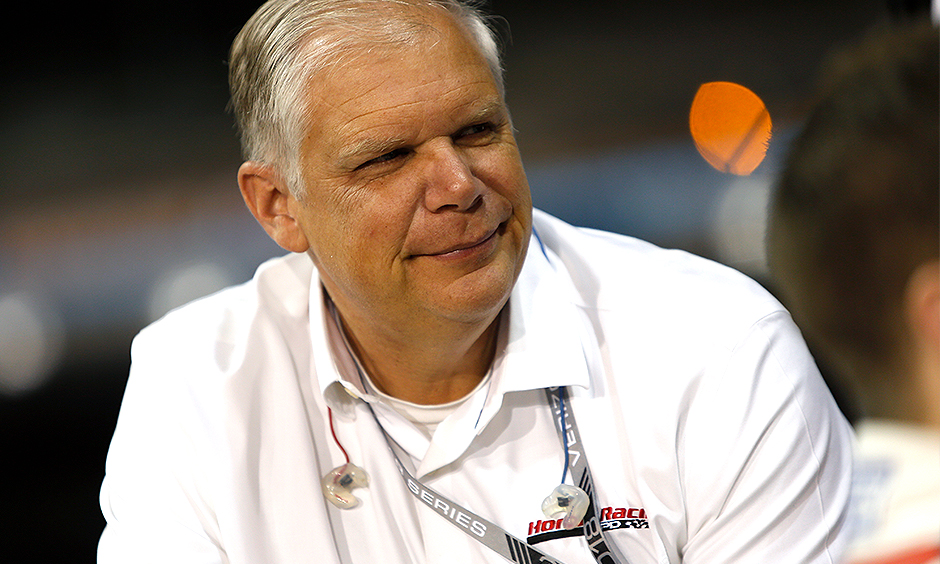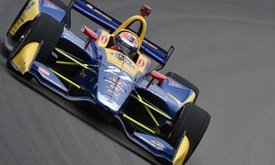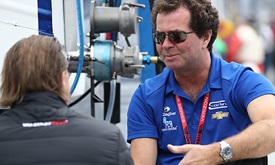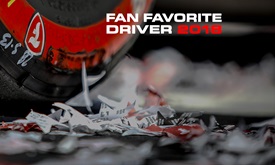Manufacturer title achieved, Honda already focusing on future
SEP 12, 2018
Fresh off securing the 2018 manufacturer championship, Honda is already focused on the road ahead in the Verizon IndyCar Series.
The biggest challenge looms with the engine regulations set in place for 2021, which will feature an upgrade in power to more than 900 horsepower with a 2.4-liter, twin-turbo V-6 engine formula. The current platform has been in use since 2012, with cars harnessing a 2.2-liter, turbocharged V-6 engine.
Since INDYCAR revealed the future powerplant regulations in May, Honda has been fast at work to develop the next generation of engines that will compete with Chevrolet and hopefully at least one more manufacturer across the diverse and challenging set of tracks that make up, the Verizon IndyCar Series.
“The development of a race engine is a pretty long-term process,” Art St. Cyr, president of Honda Performance Development, said Tuesday on a media conference call.
“Just starting now, it really fits into our schedule. Really, we needed the rules fixed when they were so we can actually do it. It's a pretty long process because we want to start over.”
Honda has been an engine supplier in Indy car racing since 1994 and part of the Verizon IndyCar Series since 2003. It was the series’ sole supplier from 2006-11 before Chevy re-entered the fight and won every manufacturer title from 2012 through last year.
While St. Cyr was proud to claim the engine crown this year – Honda drivers have won 10 of 16 races heading to this week’s season finale at Sonoma Raceway – he said his staff is already looking ahead to the changes that can be made to the current engine formula for 2019 and to the new formula for 2021.
“We really have our process of design. We'll build our first prototypes here somewhere in the future, not sure when that is yet,” St. Cyr said, “testing those, hopefully with enough time to get a second iteration in before we actually start racing.”
Though on-track testing of the 2.4-liter engine isn’t expected until summer of 2020, St. Cyr emphasized that “the timeframe we're talking about is actually pretty short when it comes to full engine development.”
St. Cyr takes pride in the fact that, with Takuma Sato’s win Sept. 2 in the Grand Prix of Portland, that every Honda team has contributed at least one race win this season. Honda supplies engines for Andretti Autosport (four wins), Chip Ganassi Racing (three), Dale Coyne Racing (one), Rahal Letterman Lanigan Racing (one) and Schmidt Peterson Motorsports (one).
“This is kind of a culmination of a lot of hard work that was done by the staff at HPD and the support that we received from American Honda,” St. Cyr said. “I also don't want to leave out the impact that our teams and our driver lineup has had, since every one of our teams for the second year in a row has won a race this year. That really bolsters our opportunities to win races.
“Always one of our goals is to win the manufacturer's championship. We're just happy to have done it this year.”
Regardless, St. Cyr would still like to see a third manufacturer enter INDYCAR in 2021, for the good of the sport. He sees it making it easier for an increased car count, even though it would mean fewer cars running Honda engines.
“I think having only two engine manufacturers right now is potentially a limiting factor for our expansion because, if we get a third manufacturer in, we would obviously have to go down in engine supply,” St. Cyr said. “I don't think that's necessarily a bad thing because it allows us to focus more on performance gains, so you don't have to start building engines so quick.
“I think there will be new teams in, as well, so I think both the Honda side and whoever else is competing against it will be on the same playing field we have right now by trying to get the best teams, best drivers and having the best cars.”
Although the potential for the future generates excitement, there is still plenty to keep Honda busy for the next two years. The limited availability to further develop the current engine brings with it a unique set of challenges.
“The things that are still open (for development) – things like pistons, valves, those types of things – you’ve got to realize that we've been developing this engine now for seven years,” St. Cyr said. “All the easy stuff is pretty much taken out of these engines. We've already done it all.
“We'll look at how do we operate the engine better? How do we exploit whatever durability margins we have on the engine? That's really the way we're looking at moving forward.”
Capturing a manufacturer championship is no easy feat, so St. Cyr said everyone at HPD and American Honda have taken exceptional pride in realizing it this year.
“It's been a very interesting journey over the last several years.” he said. “As you improve power, something else breaks, you're always chasing what is breaking. Our guys never gave up. That's what racing is all about. There's a test every week, we like to say here, when there's a race. It's always about trying to improve, improve, improve, improve, and get to the point where we are winning races on a regular basis, giving all of our teams a chance to win.
“We're really proud of where we ended up.”
Honda drivers Scott Dixon and Alexander Rossi are 1-2 in driver points headed to the INDYCAR Grand Prix of Sonoma on Sunday. Dixon leads Rossi by 29 points, with Chevrolet drivers Will Power and Josef Newgarden each 87 points out of the lead.
The season finale pays double race points, so the top four remain mathematically alive for the title. The race airs live at 6:30 p.m. ET Sunday on NBCSN and the Advance Auto Parts INDYCAR Radio Network.



















